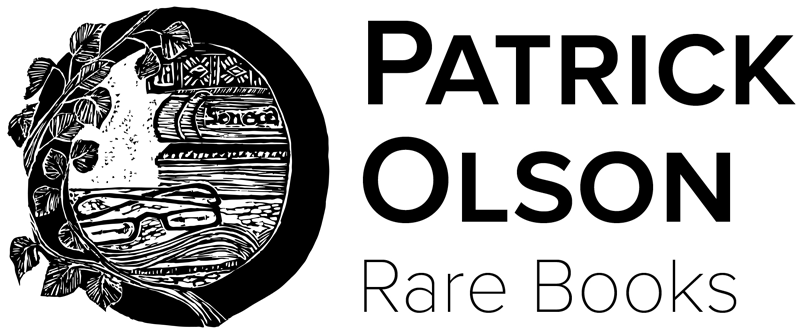Dissertation on miscarriage



Dissertation on miscarriage
Disputatio medica inauguralis; De abortu, quam, Deo Ter. Opt. Max. praeside, ex auctoritate magnifici D. rectoris D. Johannis Frederici Gronovii...pro gradu doctoratus, summisque in medicina honoribus & privilegiis rite consequendis, publico examini subjicit Johannes Georgius Waxmuth, Heilbr., die 3. Julii, loco horisque solitis
by Johannes Georgius Waxmuth | Johann Friederich Gronovius (praesens)
Leiden: Widow (Eva Elzevier) and Heirs of Johannes Elzevier (Jan Elzevir), 1670
[28] p. | 4to | A-B^4 C^6 | 187 x 145 mm
First and only edition of the oral exam for Waxmuth's medical degree, here on the topic of miscarriage, and conducted by the accomplished German scholar and librarian Johann Friedrich Gronovius. It’s often unclear whether the praeses or respondens was responsible for the content of a given disputation, if not some combination of the two. Here Waxmuth helpfully signs the dedication Auct. & Respond., suggesting he was not simply responding to his professor's work, but that he composed the text himself. ¶ The text opens by identifying the signs of pregnancy, among them morning sickness and swelling of the breasts. And because nothing less than the very survival of the human race is at stake, Waxmuth goes on to identify the causes, symptoms, and treatment of miscarriage (cum tantum sit malum, ut vel ipsa conquerenda humani generis pernicies inde dependeat...). While abortus can also be translated as abortion, Waxmuth here is clearly discussing unintentional death of the fetus. He explains that alcohol and certain foods should be avoided when pregnant (A4r). Too much sex (Venus) can endanger the fetus (B1r), clothing that is too restrictive (B1v), and even an excess of anger (B1r). “Early modern people regarded imagination as powerful and dangerous," to be sure. "Immoderate imagination could disrupt the healthy balance of a woman during generation with troubling results" (Crawford). Waxmuth then ranges over the internal causes of miscarriage, before moving on to symptoms, preventative measures, and treatments if one has occurred. When such theses are overwhelmingly based on book learning—and much of that quite dated—we're encouraged to find Waxmuth here citing one recent case from life, that of a pregnant woman in October 1668, right there in Leiden. ¶ Pregnancy was a risky business, as “a woman approaching childbirth faced a 1-2 percent likelihood of dying. This may not seem very much, but it must be remembered that in pre-industrial Europe a woman would typically have five or six children: the cumulative probability of dying in childbirth was therefore about 5-10 percent—a thousand times as great as the risk faced by a woman in Europe today” (Viazzo). And let’s not too quickly dismiss these slight academic publications, as Andrew Pettegree and Arthur der Weduwen remind us, “because cumulatively they represent the most sustained engagement of the period with many aspects of controversial theology, judicial practice, medical innovation and science…it is the university dissertations that tell us how swiftly new concepts began to trickle down into the consciousness of the new generation of aspirant scholars and possibly even challenge traditional orthodoxies.” ¶ A scarce imprint from a woman-owned iteration of the Elzevir empire. We find no sale records, and nothing earlier dedicated to the subject in auction records. We locate just two copies in North America (Cornell and National Library of Medicine).
PROVENANCE: Partially obliterated ink stamp on title of the Birmingham Medical Institute. The organization's library was an early focal point, but it transitioned in 2009 to hosting conferences. Facing escalating costs and falling income, the Institute auctioned its book collection in 2012 through Dominic Winter. The Institute still exists today, but relinquished its building in 2016.
CONDITION: Unbound, removed from a larger Sammelband. ¶ Traces of old adhesive holding it together, just barely in places, with bifolium A2.3 detached; title page a little soiled, and generally a bit dusty at the edges.
REFERENCES: USTC 1807135; not in STCN or Willems ¶ Pier Paolo Viazzo (Caroline Beamish, tr.), "Mortality, Fertility, and Family," Family Life in Early Modern Times 1500-1789 (2001), v. 1, p. 180 (cited above); Andrew Pettegree and Arthur der Weduwen, The Bookshop of the World: Making and Trading Books in the Dutch Golden Age (Yale, 2019), p. 10-11 (in the larger context of non-commercial print: “Latin books, such as funeral orations or student dissertations, were always distributed free to those attending (and in the case of the dissertations, printed at the students’ expense). This sort of work, which made up a surprising proportion of the output of the press, was extremely lucrative for the publishing trade.”), 185 (cited above); Katherine Crawford, European Sexualities, 1400-1800 (2007), p. 118 (cited above)
Item #880
